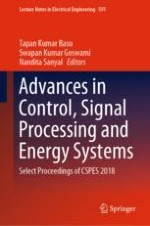This book comprises select proceedings of the National Conference on Control, Signal Processing, Energy and Power Systems (CSPES 2018). The book covers topics on both theoretical control systems and their applications across engineering domains such as automatic control, robotics, and adaptive controller design. It discusses several signal processing domains such as image, speech, biomedical signal processing and their applications in IOT, control, robotics, power and energy systems. The book emphasizes both conventional and non-conventional energy, environment, and green processes as related to energy and power systems engineering. The contents of this book will prove to be useful for students, researchers, academics, and professionals.
